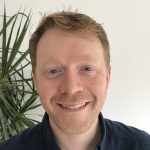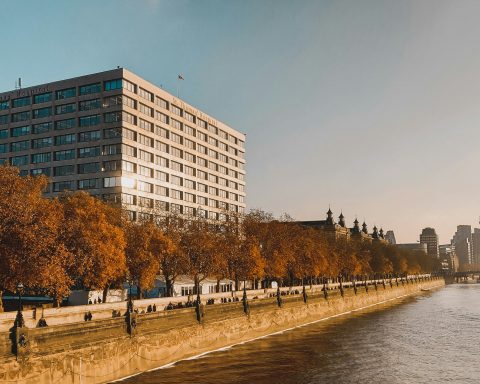
Our conceptual framework for consulting should include an understanding of constraints on freedom as a method of understanding inequalities in health
The focus and debate around the role of British general practice in addressing health inequalities is not new and has rightly been reinvigorated by the covid-19 pandemic.1 There is much understandable frustration that shortly after the thirtieth anniversary of the inverse care law that there is still so much to do in addressing these underlying inequalities.
After the thirtieth anniversary of the inverse care law .. there is still so much to do in addressing underlying [health] inequalities
There have been associated calls within the RCGP for GPs to receive additional public health training to assist them in this work. We can learn from both Tudor Hart and more recently Marmot, that one of the key features of inequality is that it is often hidden from view. Our current lens through which to view this problem is through the identification of deprived regions or communities.3
While much is made of the benefits of holistic practice, at least to date, there has been no specific attempt to make inequalities central to the consulting practice of all GPs, including those in more affluent or rural communities. Given that we understand the key determinants of health relate to those inequalities, is it arguably the remit of all practicing GPs to learn about how they affect individuals, not just those at the ‘deep end’. While those in deprived areas rightly claim they should be the focus of additional resources for primary care it is time, in my view, to make identifying inequalities a skill for all GPs to learn, practice and teach.
With this in mind it is worth remembering that the consultation remains the basic unit of general practice. It is what patients ask for and it is what we spend most of our time doing with an estimated 307 million appointments taking place a year in England alone in 2018.4
There has been no specific attempt to make inequalities central to the consulting practice of all GPs.
Consulting, science and free will
Science matters to doctors. The link between good science and good medicine is so strong that the boundary is not even visible to most practicing doctors. The evidence-based medicine (EBM) paradigm is the main driver of modern medical practice, grounded in epidemiology and an outlook for discovery which relies on statistical significance.6 It is within general practice, with its focus on individual patient assessment in a community setting and, where presenting problems are poorly differentiated, that this link comes under most strain.
It is no surprise, therefore, that the skills we learn from the likes of Roger Neighbour and perhaps more recently Martin Burnett (in his book ‘A tale of two houses’) sit alongside the NICE guidelines in the conceptual toolbox of GPs.7
Consultation models are perhaps the best example of a basis for useful knowledge which extends to the boundaries of what science can tell us. Yet it remains true that most UK GPs (along with most doctors) value a model of practice that relies heavily on what might be boiled down to the ‘natural laws’ of science.
Whether through an understanding of the chemical equations that underpin our physiology to the mechanism of action of drugs it is these immovable notions that hold sway in our minds. In practical terms this is solidified in GP training where, up until its suspension due to the pandemic, the clinical skills assessment (CSA) set cases, each with their own associated basis in EBM.
What is also anecdotally characteristic of medical practice (and indeed the rest of human kind) is the enormous value we place on the notion of free will. Not only do we believe that we are firmly in control of medical decision making but we also believe in the power of patients to contribute to (where possible lead on) key decisions about what happens to them.
What is … characteristic of medical practice … is the enormous value we place on the notion of free will.
Many patients, and in my experience, those who have the most difficult lives, already inform us of this problem and will respond to our attempts to explore their ‘Ideas, Concerns and Expectations’ by reflecting the questions back. ‘You’re the doctor, you tell me!” Or when medical advice is countered with “Yes, but”, from patients whose lives cannot accommodate practical advice. When this happens in consultations, it should not be regarded as a failure of a valid attempt at patient centeredness but, as we shall see, as a possible marker of inequality in its own right.
How free is my patient?
Perhaps we can begin by appreciating that some room for freedom matters firstly (at least on a superficial level) to our general attitude within consultations. If we are to accept that deterministic scientific laws are true, we must appreciate that the unhealthy behaviors and circumstances of our most deprived patients are somewhat less under their control than we believe them to be. Perhaps in a deterministic universe they are not responsible at all. This in itself may lead to more productive engagement with those who might have find themselves routinely marginalised when they try to access healthcare.8
On first reading this is helpful, but perhaps, on reflection becomes jarring for lots of doctors who (like most human beings) hold a profound attachment to their own free will and rightly believe that patients have it too. The basic task therefore becomes identifying constraints on people’s lives, not simply passively documenting their preferences. We need to begin to ask ourselves, as a fundamental principle of consultations: How free is my patient?
The basic task therefore becomes identifying constraints on people’s lives, not simply passively documenting their preferences.
What is more, an enhanced understanding of freedom gives us an opportunity to reflect on the freedom of those individuals who disengage when asked their opinion about their care. It is also worth noting that patients facing such problems may find their challenges compounded by ‘future discounting’ where the constraints of their lives leave them with little chance but to take short term choices rather than plan ahead.
We may, as practicing GPs, already appreciate that in the best consultations this work already occurs. However, this incredibly valuable approach is not measured, not systemically taught and passed off as part of the ‘art’ of general practice because it cannot find a natural home in the EBM paradigm.
The wider adoption of social prescribing (an intervention notable for its lack of empirical evidence) in primary care organisations perhaps proves this point. What we might take forward, however, is a more nuanced approach to our definitions of what is medical and what is ‘non medical’. While our colleagues in secondary care adopt an ever more focused approach to specialist practice, underpinned by the EBM paradigm, we must remain clear that the role of general practice is not to better define the boundary between the medical and non-medical but to proudly occupy this grey zone as we have always done. This involves a finely tuned understanding of when our patients need assistance or advocacy to remain well rather than understand only how they get ill.
The role of general practice is not to … define the boundary between the medical and non-medical but to proudly occupy this grey zone as we have always done.
Wider considerations, political problems
There are wider and more complex versions of freedom which at times seem to depend on your own definition of the word. One is to remind doctors of their own constraints and freedom. Just a couple of factors to consider are the effects of working in a health system which holds up the powerful threat of litigation together with the sometimes-overwhelming moral commitment to a system delivered free at the point of care.
What we can perhaps appreciate better, is a framework that reinvigorates that moral commitment and pushes the work of Tudor-Hart and others forwards. This appreciates that freedom from illness is not just founded on economics but an understanding that good healthcare is about production and not consumption.9
The best approaches to improving consultations do not add more tasks but provide more depth.
Luckily modern thinkers can reassure us that ideas of freedom are useful because they are mutable and complex. Maggie Nelson in her recent book ‘On Freedom’, reminds us of the importance of the philosopher Ludwig Wittgenstein’s assertion that the meaning of a word relies on its use.10 In this sense we can turn our attention away from a clear definition towards better use of the concepts of freedom and constraint as applied to the lives of our patients. This approach, helpfully, does not rely on a specific political commitment but rather a commitment to a more robust form of patient centeredness.
Conclusion
Health inequalities can no longer be ignored by doctors. There is no excuse for just accepting that some patients will get sick without us appreciating why.
Health inequalities can no longer be ignored by doctors.
Our frameworks for consulting need to be updated to reflect this fact and a new focus on understanding freedom and constraint paves the way for more productive consultations with those most in need.
References
- Poverty, Health Inequalities and the role of General Practice Lunan C, Liiv A Item 15 RCGP UK Council 18/92020
- The Exceptional Potential of General Practice: Making a Difference in Primary care Graham C M Watt CRC Press 2019
- Build back Fairer: The Covid-19 Marmot Review accessed via: https://www.health.org.uk/publications/build-back-fairer-the-covid-19-marmot-review
- Appointments in General Practice, October 2018 NHS Digital Accessed via : https://digital.nhs.uk/data-and- information/publications/statistical/appointments-in-general-practice/oct-2018
- Starfield B, Shi L, Macinko J. Contribution of primary care to health systems and health. Milbank Q. 2005;83(3):457-502. doi:10.1111/j.1468-0009.2005.00409.x
- Sackett DL, Haynes RB, Guyatt GH, Tugwell P. Clinical epidemiology: A basic science for clinical medicine. Boston, Mass: Little, Brown and Company; 1991.
- The GP Consultation Reimagined: A Tale of Two Houses. Martin Brunet Scion Publishing Ltd, 2020, ISBN 9781911510598
- O’Carroll A, Wainwright D Doctor–patient interactions that exclude patients experiencing homelessness from health services: an ethnographic exploration
BJGP Open 2021; 5 (3): BJGPO.2021.0031. DOI: 10.3399/BJGPO.2021.0031 - A New Kind Of Doctor The General Practitioner’s Part in The Health of The Community. Julian Tudor Hart The Merlin Press LTd. 1988 ISBN 978-0-85036-300-5
- On Freedom. Maggie Nelson. Penguin Random House, 2021. ISBN 9781787332690
Featured image by Zulmaury Saavedra on Unsplash









Nada Khan is an Exeter-based NIHR Academic Clinical Fellow in general practice and GPST4/registrar, and an Associate Editor at the BJGP. She is on Twitter: @nadafkhan
It is a scandal that in our society, the rich are getting richer and healthier, whilst the poor are getting poorer and dying younger. The Marmot ’10 Years On’ Review showed that not only have improvements in the social gradient of life expectancy stalled in England, that it worsened in the period between 2010-12 to 2016-2018. Women in the most deprived 10 percent of areas are dying younger than they were in 2010. As noted in the review, ‘if health has stopped improving it is a sign that society has stopped improving’.1
The Covid pandemic has worsened existing inequity and created new socio-economic disparities that are only being exacerbated by the cost of living crisis. COVID-19 was a discriminatory virus, disproportionately infecting and killing people in the Black and South Asian communities during the first wave. These groups are also disproportionately represented in high-risk occupations and more likely to be living in deprived areas with comorbid disease, factors themselves that are the result of inequalities and structural racism. It feels sometimes like we are trapped in a self-perpetuating hamster wheel driving society towards more inequity and poorer health outcomes. As Mark Riley wrote for BJGP Life, ‘the impact of health inequalities we witness now in the Covid-19 pandemic are an indictment of society’s efforts to tackle them’.
In 2020, Sir Michael Marmot and his team at the Institute of Health Equity published ‘Build Back Fairer’ to examine how the Covid pandemic affected health inequalities in England.2 The findings of the Build Back Fairer report in terms of inequity and Covid are stark. The same key messages are echoed throughout the report: low income and non-White households were already struggling, and the Covid pandemic has exacerbated financial and health inequality. The pandemic led to declining incomes, worsening the financial positions of many households already experiencing financial instability and leading to rapid increases in food poverty and homelessness. Our politicians seem focussed on selling us a story that we did well during the Covid pandemic, that our vaccination programme was ‘world leading’, but the reality is that England had one of the highest mortality rates in Europe from Covid, and is suffering badly in terms of the economic and societal repercussions.
Can the pandemic act as a pivot point to make a real change to these embedded inequities in our society? The Build Back Fairer report challenges us to ask ourselves what kind of society we want to build post-Covid. It shouldn’t be a missed opportunity to promote health and reduce social inequity amongst the most vulnerable.
What are the take-home messages from Build Back Fairer for GPs and GP commissioners? Short answer: equity needs to be at the heart of what we do. Longer answer: reducing health inequalities require long-term strategic policies at the practice, primary care network and Integrated Care Systems (ICS) level with equity as the focus.
To reduce inequalities In the short and medium term, the Build Back Fairer report encourages us to consider proportionate allocation of measures to prevent Covid, including vaccination and support to people in high risk occupations or geographical areas. Practices can become more involved with tackling the causes of social inequality through, for example, social prescribing.
At the level of the GP and patient interaction, I have written here in BJGP Life about making food and fuel poverty visible. It is also worth re-reading this piece here in BJGP Life by Will Mackintosh, who views our consultations with patients as the ‘basic unit’ to conceptualise health inequalities and patient freedom. But above all this, is it time for GPs to think more closely about their role as public health leaders and to take a more active role to advocate for political change?
We talk about getting back to normal, but we need to remember that our ‘normal’ society pre-Covid was inequitable, systemically racist and unfair. As noted in Build Back Fairer, ‘normal is not acceptable if that means where we were in February 2020’.2 I balk when writing things that involve sentiments like ‘we should do’ or ‘we need to’; we are all tired, overworked and managing heavy clinical burdens. But what is our alternative when the most underserved and underprivileged people in our society are getting poorer, and dying younger than they were ten years ago? It is a scandal. And I hope we take up the challenge posed to us in ‘Build Back Fairer’ to ask ourselves: what kind of society do we want to live in?
References
Marmot MA, J.; Boyce, T.; Goldblatt, P.; Morrison, J. Health equity in England: The Marmot review 10 years on London: Institute of Health Equity; 2020.
Marmot MA, J.; Goldblatt, P.; Herd, E.; Morrison, J. Build back fairer: The Covid-19 Marmot review. London: Institute of Health Quity; 2020.
Featured image: Bricks from demolition, taken by Andrew Papanikitas 2022